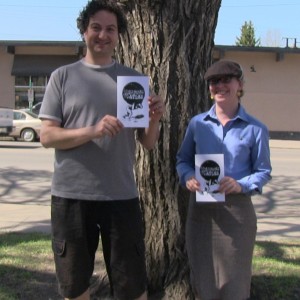The importance of Closed Circuit Television (CCTV)
When police are called to investigate a crime, we are brought to the scene after the incident has occurred. Upon arrival we work our way through the available evidence to decipher what has happened. This can be very difficult at times, especially when dealing with witness testimony that cannot be verified through any other source. When CCTV, closed-circuit television, has captured a crime in its lens, this helps us immensely in our investigation. It helps police verify the version of events that is provided to us by the parties involved and is invaluable when dealing with the typical “he said – she said” scenario.
For example, police responded to a complaint of a fight that had just occurred in which both parties were held in custody. The stories provided by those involved varied wildly. The guilty party claimed he stopped to talk to the eventual victim when he was assaulted without warning. The victim stated quite the opposite, indicating he was approached by the other male who was agitated and attempted to start a fight. When this was unsuccessful he began punching the victim while he was still seated. The event culminated in the complainant overpowering the assailant, taking him to the ground and calling police for assistance.
In this situation, where there were no independent witnesses, police would have been hard pressed to determine the truth behind either party’s statements. Fortunately, there was a camera that captured the event from a distance. Even though it was of poor quality, the footage still allowed police to validate the information of the complainant and lay charges against the guilty party. This successful conclusion was only possible because of the CCTV system in place. Without it, this instance would have been left unresolved and the guilty party would have not been held accountable for his actions.
The camera in the above noted instance was invaluable to police for confirming the correct version of events, but if the guilty party had not remained on scene we would have been unable to identify him due to the low quality. To assist in the identification of suspects, camera placement and quality of footage are key.
Many cameras are mounted from the ceiling, resulting in a view that captures the totality of the situation but has a limited effectiveness in identifying suspects. Cameras that are mounted at eye level, in a high traffic area capture much clearer video and increase the evidentiary value.
Criminals are creatures of habit. If they have committed a crime at a location in the past without being identified, they are likely to continue to commit crime there.
Criminals are creatures of habit. If they have committed a crime at a location in the past without being identified, they are likely to continue to commit crime there. If criminals can be identified and charged, the likelihood of them reoffending at that location decreases substantially.
The exterior of properties and the immediate area surrounding them should also be of concern to business owners. Activities that occur directly outside of a business will have a great effect on the clients that business serves. If clients are continually hassled by aggressive pan handlers, are required to navigate their way through drug dealers, or are at risk of having their vehicles broken into while patronizing a business, they are going to take their business elsewhere. As such, the monitoring of the areas surrounding businesses ensures that those responsible for the negative activity are unable to do so with impunity.
We strongly encourage businesses and stakeholders to install a CCTV system on their property. Here are a few tips for installing new CCTV systems or relocating existing systems:
- Place cameras in access points at eye level where the face of the suspect is likely to be captured.
- Place cameras in high risk areas where crimes have occurred in the past.
- Ensure your CCTV system has the capacity to store video for at least a week, preferably for up to one month as some victims may be delayed in reporting .
- Have trained staff on site that can access the video for police. Police may have a suspect in custody at the time but may be unable to lay charges without confirming the suspect’s actions with the use of the CCTV system.
- Police will require a copy of the video for evidentiary purposes. As such, you will need to provide copies of the video to police.
- Place cameras on the outside of your property in likely crime areas.
If you would like assistance in finding the ideal camera locations, contact your Community Liaison Constable who will be able to assist you.
_Cst. Wasmuth can be reached at darren.wasmuth@edmontonpolice.ca











